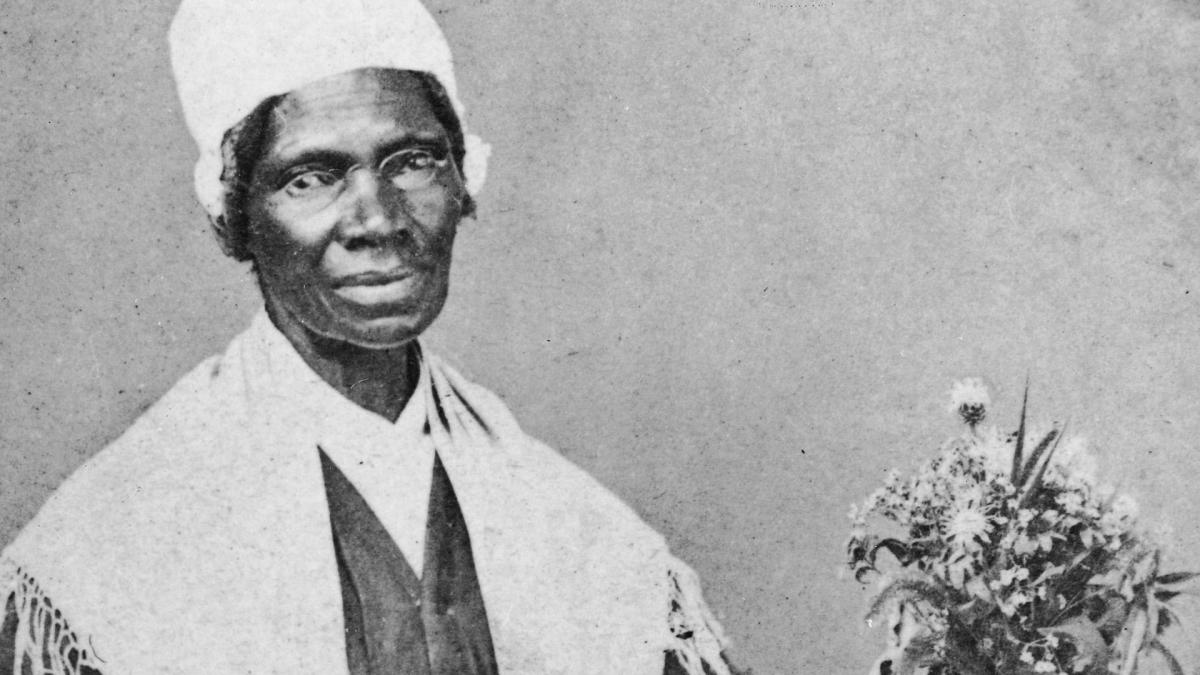
The most widely quoted version of this famous speech appears first and is from The Narrative of Sojourner Truth, written by others and published in 1875. The second version is from the Salem, Ohio, Anti-Slavery Bugle, which published its version on June 21, 1851, one month after Truth’s presentation. Many scholars feel the Bugle’s version is a more accurate portrayal of the speech since it was printed within one month of the convention. However, both versions rely upon personal accounts by others and no known transcript of the speech exists.
Narrative of Sojourner Truth version:
Well, children, where there is so much racket there must be something out of kilter. I think that ’twixt the negroes of the South and the women at the North, all talking about rights, the white men will be in a fix pretty soon. But what’s all this here talking about?
That man over there says that women need to be helped into carriages, and lifted over ditches, and to have the best place everywhere. Nobody ever helps me into carriages, or over mud-puddles, or gives me any best place! And ain’t I a woman?
Look at me! Look at my arm! I have ploughed and planted, and gathered into barns, and no man could head me! And ain’t I a woman?
I could work as much and eat as much as a man - when I could get it - and bear the lash as well! And ain’t I a woman?
I have borne thirteen children, and seen most all sold off to slavery, and when I cried out with my mother’s grief, none but Jesus heard me! And ain’t I a woman?
Then they talk about this thing in the head; what’s this they call it? (Member of audience whispers, “intellect.”) That’s it, honey. What’s that got to do with women’s rights or negroes’ rights? If my cup won’t hold but a pint, and yours holds a quart, wouldn’t you be mean not to let me have my little half measure full?
Then that little man in black there, he says women can’t have as much rights as men, ’cause Christ wasn’t a woman! Where did your Christ come from? Where did your Christ come from? From God and a woman! Man had nothing to do with Him.
If the first woman God ever made was strong enough to turn the world upside down all alone, these women together ought to be able to turn it back, and get it right side up again!
And now they is asking to do it, the men better let them.
Obliged to you for hearing me, and now old Sojourner ain’t got nothing more to say.
Anti-Slavery Bugle version:
One of the most unique and interesting speeches of the convention was made by Sojourner Truth, an emancipated slave. It is impossible to transfer it to paper, or convey any adequate idea of the effect it produced upon the audience. Those only can appreciate it who saw her powerful form, her whole-souled, earnest gesture, and listened to her strong and truthful tones. She came forward to the platform and addressing the President said with great simplicity:
May I say a few words? Receiving an affirmative answer, she proceeded; I want to say a few words about this matter. I am a woman’s rights [sic]. I have as much muscle as any man, and can do as much work as any man. I have plowed and reaped and husked and chopped and mowed, and can any man do more than that? I have heard much about the sexes being equal; I can carry as much as any man, and can eat as much too, if I can get it. I am strong as any man that is now.
As for intellect, all I can say is, if woman have a pint and man a quart—why can’t she have her little pint full? You need not be afraid to give us our rights for fear we will take too much—for we won’t take more than our pint’ll hold.
The poor men seem to be all in confusion and don’t know what to do. Why children, if you have woman’s rights give it to her and you will feel better. You will have your own rights, and they won’t be so much trouble.
I can’t read, but I can hear. I have heard the Bible and have learned that Eve caused man to sin. Well if woman upset the world, do give her a chance to set it right side up again. The lady has spoken about Jesus, how he never spurned woman from him, and she was right. When Lazarus died, Mary and Martha came to him with faith and love and besought him to raise their brother. And Jesus wept—and Lazarus came forth. And how came Jesus into the world? Through God who created him and woman who bore him. Man, where is your part?
But the women are coming up blessed be God and a few of the men are coming up with them. But man is in a tight place, the poor slave is on him, woman is coming on him, and he is surely between a hawk and a buzzard.